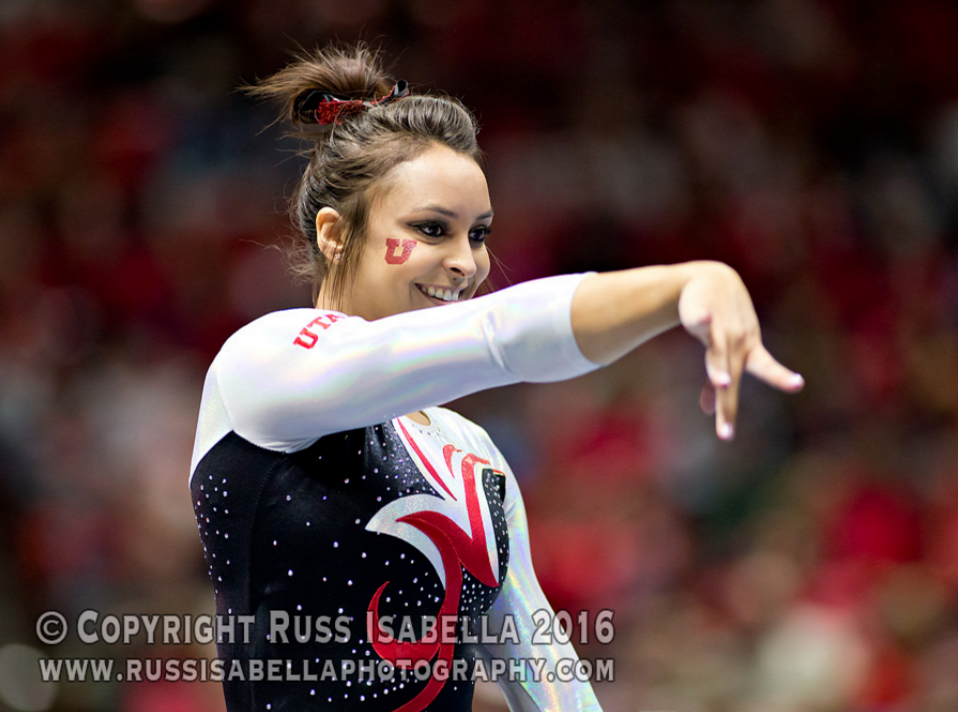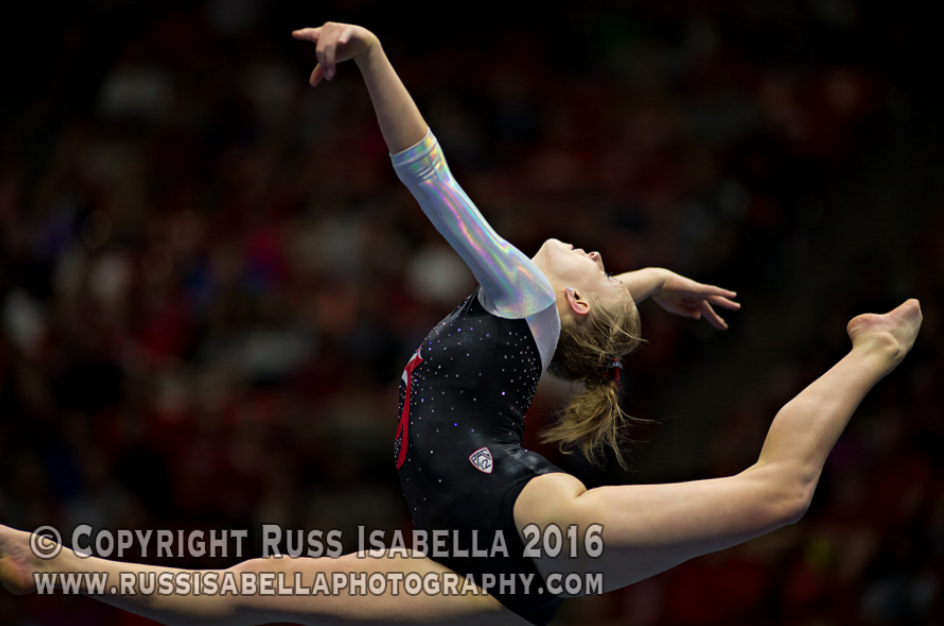An emphasis of this sports photography course will be recognition of the many decisions that must be made for each event photographed, and the implications, good and bad, of each of these decisions. Gymnastics is one of my favorite sports to photograph (for reasons that will become more clear within my course). When I photograph floor exercises, my favorite lens is my oldest lens—a Canon 200mm f/1.8. The very wide aperture provides a great deal of flexibility with my settings (the wider my aperture, the lower my ISO and/or higher my shutter speed), but it’s the stunning quality of the photos that drives my preference. Two ‘risks’ come along with this great potential. First, shooting at f/2 provides a relatively narrow depth of field. This can make for wonderful separation of subject from background, but only if focus is spot-on. Second, the 200mm fixed focal range makes for relatively tight framing of my subject and an increased likelihood of cutting off body parts I don’t want to cut off. Here are two images with a Canon 1DX camera body and 200 f/1.8 lens. They represent the good and the bad.


– BPSOP Instuctor: Russ Isabella
Russ Teaches: Sports Photography










